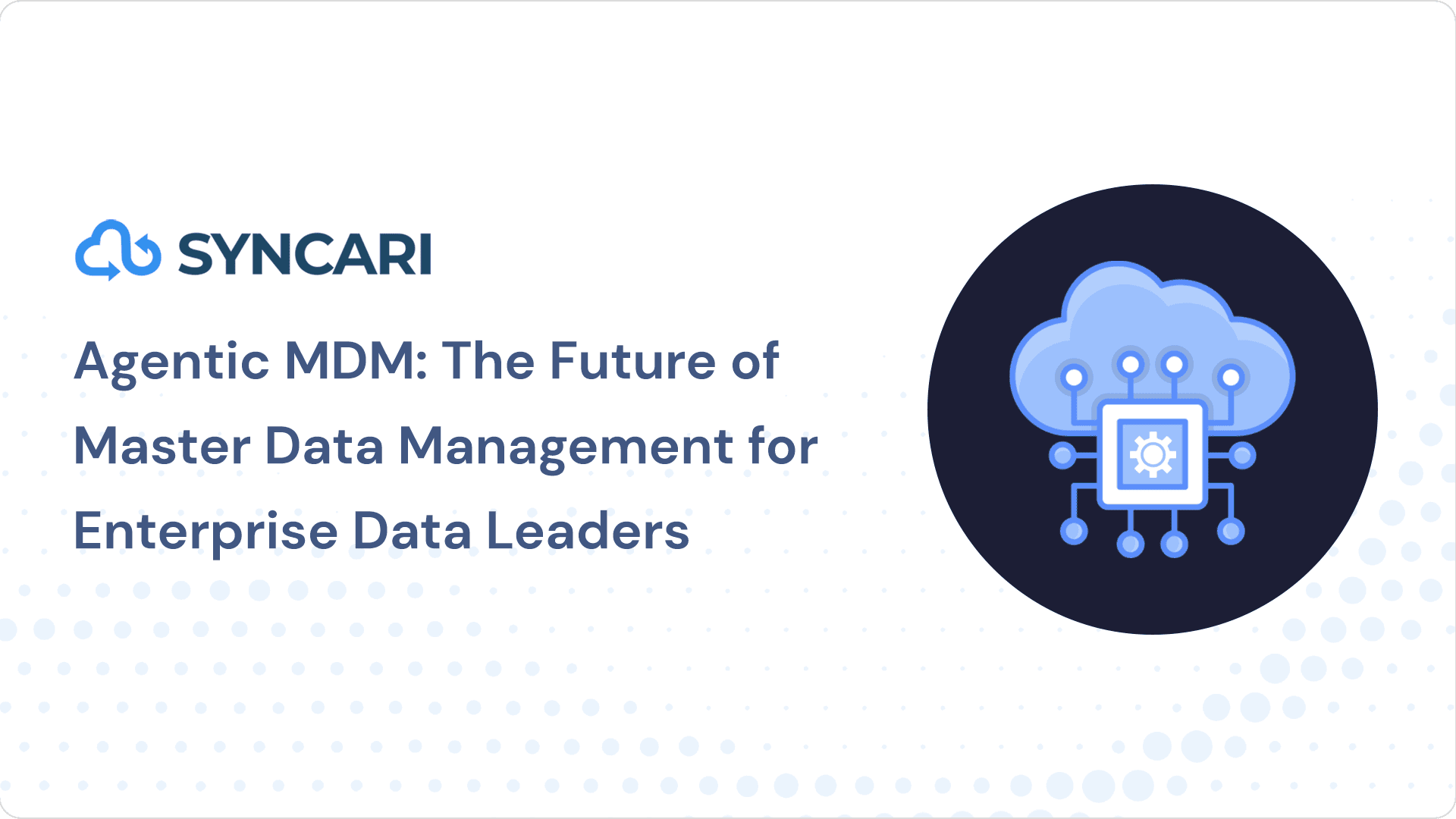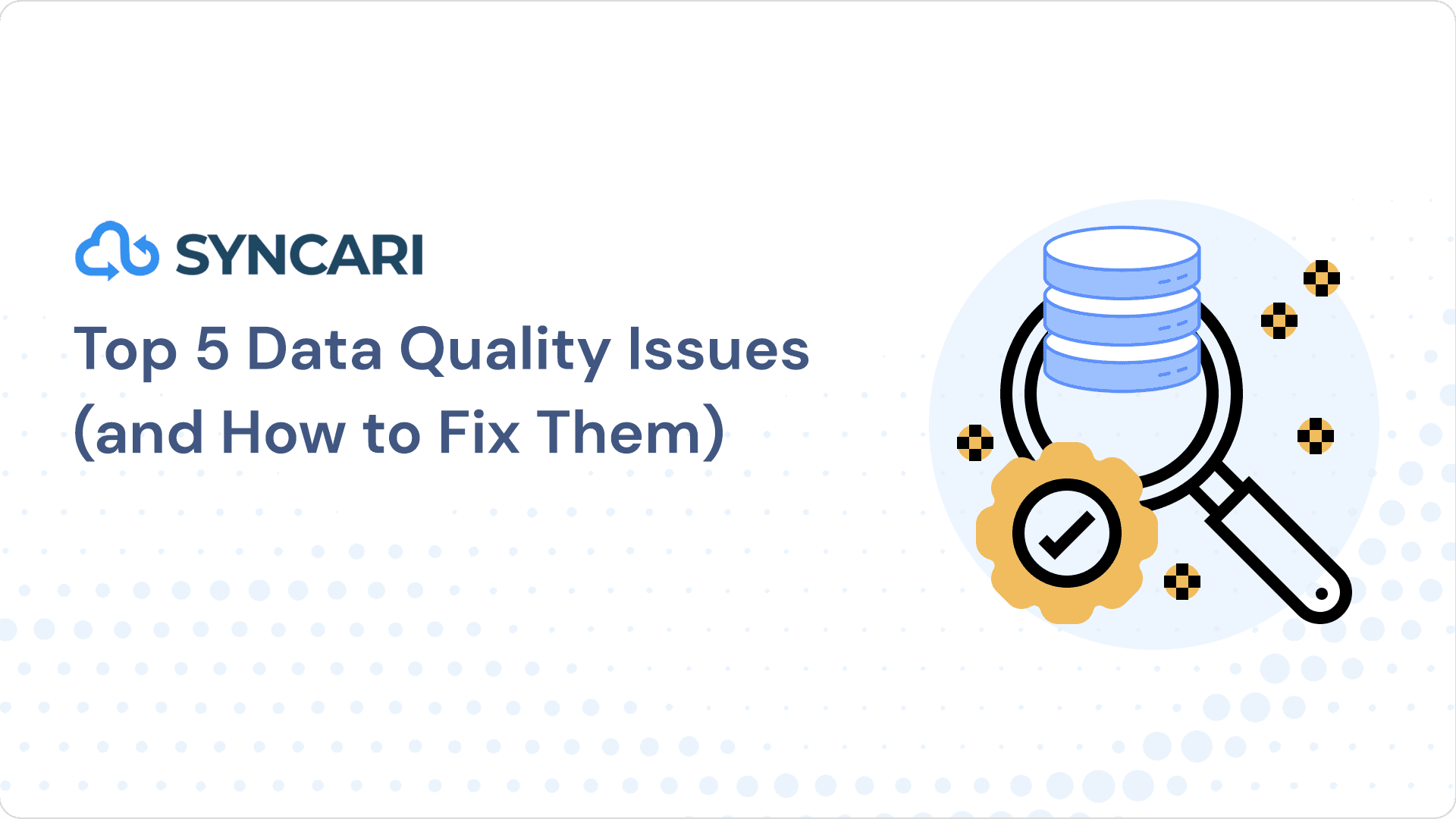Harnessing the power of data is crucial in today’s business landscape, and integrating platforms such as Pendo and Salesforce is key to this strategy. Pendo, a leading product experience platform, provides insightful user behavior data and critical product usage analytics. Salesforce, a world-class customer relationship management (CRM) platform, optimizes customer interactions for businesses. Combining these two through integration can amplify your go-to-market strategies, enhancing customer engagement and fueling revenue growth.
However, the challenge of managing such integrations and ensuring a smooth data flow often arises, leading to data duplication and errors. Enter Syncari, the game-changer with its stateful data synchronization solution. Syncari ensures real-time data consistency across all systems, simplifying the integration process and supercharging your Pendo-Salesforce integration’s effectiveness. Join us as we explore the synergies of Pendo, Salesforce, and Syncari, and how their integration can turbocharge your business operations.
[ Related: Demo Byte: Pendo to Salesforce Sync ]
Pendo-Salesforce Integration
Integrating Pendo and Salesforce can provide immense benefits, paving the way for a more data-driven and customer-centric business approach. By merging the capabilities of Pendo, a leading product experience platform, and Salesforce, a globally recognized customer relationship management (CRM) solution, you can foster synergies that can propel your business forward.
There are numerous use cases for Pendo-Salesforce integration. For instance, the integration can allow sales teams to have a clear overview of how customers are interacting with your product right within Salesforce. This can lead to more personalized interactions and can help your team identify cross-sell and upsell opportunities more effectively.
Moreover, Pendo’s native integration capabilities mean that it can seamlessly connect with Salesforce, ensuring an uninterrupted flow of data. Pendo can capture user behavior data, generate insightful product usage analytics, and then feed these insights into Salesforce.
Salesforce, in turn, can significantly benefit from these insights from Pendo. With a clear understanding of product usage, Salesforce can help teams tailor their strategies based on customer behavior. For example, the sales team can use the insights to identify potential at-risk accounts, while the marketing team can leverage the data to create targeted campaigns.
Thus, Pendo-Salesforce integration can empower businesses to optimize their strategies, drive customer engagement, and enhance their overall bottom line. However, the integration process itself can present challenges.
[ Related: The B2B Customer Data Model: why it matters and how to build one ]
What are the explicit limitations of the native Pendo-Salesforce integration?
The native Pendo-Salesforce integration has a few explicit limitations. These limitations include:
- Limited data sync: The native Pendo-Salesforce integration only syncs the following data between the two platforms:
- User properties: This includes data such as the user’s name, email address, and company.
- Session data: This includes data such as the user’s IP address, browser, and operating system.
- Page views: This includes data such as the pages that the user has visited and how long they spent on each page.
- Events: This includes data such as the actions that the user has taken, such as clicking on a button or filling out a form.
This limited data sync can make it difficult to get a complete view of your customers and their activity. For example, you may not be able to see which features your customers are struggling with or which features they are using the most.
- Manual configuration: The native Pendo-Salesforce integration requires manual configuration. This means that you will need to create a Pendo account, a Salesforce account, and then connect the two platforms. You will also need to select the data that you want to sync between the two platforms.
Manual configuration can be time-consuming and error-prone. For example, you may accidentally select the wrong data to sync or you may forget to configure a setting.
- No customization: The native Pendo-Salesforce integration is not customizable. This means that you cannot tailor it to your specific needs. For example, you may not be able to change the data that is synced between the two platforms or you may not be able to change the way that the data is displayed.
Here are some workarounds for these limitations:
- Use a third-party integration tool: Third-party integration tools can sync more data between Pendo and Salesforce, they can be configured automatically, and they can be customized to meet your specific needs. Some popular third-party integration tools include Zapier, Integromat, and Tray.io.
- Use Pendo’s API: Pendo’s API allows you to programmatically sync data between Pendo and Salesforce. This can be a more efficient and scalable solution than using the native integration.
- Important things to consider:
- Technical Proficiency: The application of Pendo’s API demands a high level of technical know-how. Familiarity with API usage and integration into existing systems is vital. Should you find the technical hurdles daunting or lack the time for API mastery, the services of a Pendo partner can be sought for API implementation.
- Financial Commitment: Pendo’s API comes with a price tag. Access to this API requires an active Pendo subscription. The subscription cost varies based on your organization’s size and the features you require.
- Intricacy: Navigating Pendo’s API might be a complex task. With numerous endpoints and parameters to comprehend, effective use of the API can be challenging. If technical complexities intimidate you or if time is a constraint in learning API usage, engaging a Pendo partner for API implementation could be a viable option.
- Important things to consider:
- Considering Pendo’s API implementation requires a careful evaluation of its advantages and drawbacks. If you possess the technical acumen and time to master the API, it can significantly enhance the benefits derived from Pendo. But, if technical complexities deter you or time is a limiting factor, hiring a Pendo partner for API implementation could be a consideration.
If you have specific needs, you may not be able to meet them with the native Pendo-Salesforce integration.
Overall, the native Pendo-Salesforce integration has a few limitations that may make it difficult to use. If you are looking for a more comprehensive and customizable solution, you should consider using a third-party integration tool or Pendo’s API.
[ Related: Customer Data Strategy: B2B’s 3 Most Common Approaches ]
Syncari’s Role in Pendo-Salesforce Integration
Syncari, a leading no-code integration platform, empowers businesses by seamlessly connecting their apps and data. Specifically, Syncari’s Pendo-Salesforce integration offers a robust solution to synchronize diverse data sets, such as user behavior, feedback, and engagement metrics between Pendo and Salesforce.
At the heart of Syncari’s capabilities is its stateful sync technology. Unlike traditional data integration methods, stateful sync ensures data consistency across all systems in real-time. This means that data is not just copied from one system to another; instead, it’s synchronized, keeping every piece of information up-to-date across all platforms.
Syncari’s platform is designed to simplify and automate the integration process. With its intuitive interface and powerful automation features, setting up the Pendo-Salesforce integration becomes a breeze. You can easily choose the data fields you want to sync, set up workflows, and even automate data cleaning tasks. Moreover, Syncari’s robust error detection and resolution capabilities ensure that your data remains error-free.
This integration serves multiple purposes:
- Enhanced Customer Insight: Syncing data between Pendo and Salesforce unveils valuable insights into customer usage patterns, frequently used features, and potential roadblocks.
Activating and leveraging this information can lead to product refinement and enhanced user-friendliness – something as simple as a slack alert when a threshold has been exceeded can be an excellent way to identify upsell opportunities in a timely manner. Optimized Marketing & Sales Efforts: The integration of data between Pendo and Salesforce can highlight the customer segments most likely to show interest in your offerings, enabling more targeted and effective marketing and sales campaigns. - Improved Customer Support: The data sync between Pendo and Salesforce can shed light on common customer issues, enabling quicker resolution and improved customer support.
It’s the activation of that data that unlocks value.
Leveraging Syncari’s Pendo-Salesforce integration can significantly enhance your customer experience. If your goal is to extract maximum value from both Pendo and Salesforce, Syncari’s integration solution is an excellent choice.
Syncari’s integration of Pendo and Salesforce brings additional benefits:
- User-Friendly: Syncari’s no-code platform simplifies the process of linking Pendo and Salesforce, requiring no coding experience.
- Flexible: Syncari offers an adaptable integration platform, allowing you to choose the data to be synced between Pendo and Salesforce.
- Scalable: As your business expands, Syncari’s integration platform can effortlessly accommodate additional data sources and destinations.
In the quest for an effective Pendo and Salesforce integration, Syncari emerges as an ideal solution. Its user-friendly, flexible, and scalable no-code integration platform facilitates easy connection between Pendo and Salesforce.
[ Related: How to Build a Holistic Customer Health Score ]
To integrate or sync?
Integrating Pendo and Salesforce is a strategic move that can yield considerable benefits for businesses seeking to enhance customer experience, drive sales, and garner valuable product usage insights. These benefits, however, can only be fully realized if the integration is effectively managed and maintained. This is where Syncari’s stateful sync technology proves to be a game-changer.
Syncari simplifies the integration process, ensures data consistency, and empowers businesses to leverage the full potential of their data. With Syncari, businesses can move beyond the complexities of data integration to focus on what truly matters—utilizing data to drive growth and improve customer experience.
The success of Pendo-Salesforce integration using Syncari is evident in the experiences of numerous businesses that have been able to reduce data errors, improve tracking of customer behavior, and ultimately drive more value from their integrated systems.
If you’re ready to take your Pendo-Salesforce integration to the next level, learn more about how Syncari can help. Discover the power of stateful sync and see how Syncari can transform your data management and integration processes. It’s time to sync, not just integrate.


